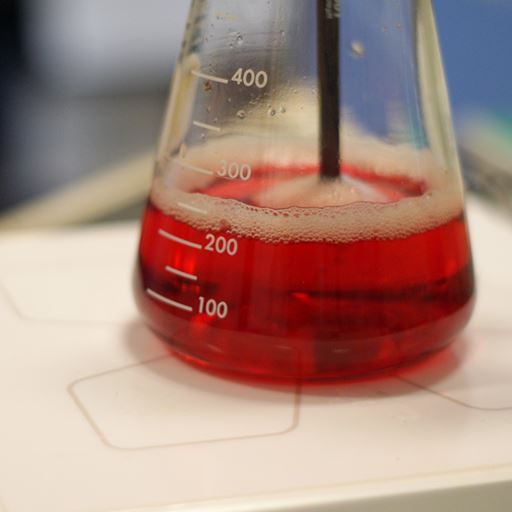Insight: Blood, blood, glorious (artificial) blood
Scientists are developing a one-size-fits-all, third generation artificial blood substitute.
-
Tagged under
Health and wellbeing
-
Lead Academics
Professor Chris Cooper
Dr Brandon Reeder

There is an urgent, global need to find a safe artificial blood substitute.
With over 85 million units of donated blood given to people worldwide every year, the challenge is to have enough blood where it is needed, 24/7 and be assured of its quality, purity and efficacy.
After all, blood does have its problems:
- the number of donors is decreasing
- susceptible to contamination
- a limited shelf life and
- not easily available in scenes of major emergencies
The answer is to develop an artificial blood substitute and this is the challenge scientists at the University of Essex are hoping to overcome with their HaemO2 project to engineer a one-size-fits-all, third generation artificial blood substitute.
Why HaemO2 is different
Haemoglobin is the key protein in red blood cells that carries oxygen around our bodies. The HaemO2 team aim to create an artificial haemoglobin-based oxygen carrier (HBOC) that could be used as a substitute for blood lost in surgery or trauma.
Attempts so far to make a safe and effective HBOC have proved problematic as outside the protective environment of the red cell, haemoglobin can be toxic.
Professor Chris Cooper and his team at Essex have engineered novel haemoglobin molecules as a basis for an artificial blood substitute. The beauty of this product is that it is detoxified by the body’s own defences.
Their engineered haemoglobin product has been granted patents in the US and Australia and has recently also been granted a patent in the EU.
'HaemO2 is all about using the tools of modern synthetic biology to create a safe blood substitute for the 21st century,”
The benefits
The quest to create artificial blood is big business, with the past 25 years seeing up to £2 billion invested globally on research into a usable alternative and many major US companies falling by the wayside in the hunt for a substitute.
Successfully engineering a safe artificial blood substitute means some of the inherent problems with transfusions could be overcome as there would be no need for blood group typing and a longer shelf life would mean it could be stockpiled for major disasters.
“With over 40 million transfusions of red blood cells worldwide, the challenge is to have enough blood in the right place at the right time.”
Next steps
Funding from the Medical Research Council and the Biotechnology and Biological Sciences Research Council (BBSRC) has allowed the Essex scientists to take the first step on the road to bridging the gap between top class research and the commercialisation of a product.
The team are also branching out into “oxygen therapeutics”. This uses a lower dose of their engineered haemoglobin product to reach parts of the circulation the larger red cells cannot access in order to improve recovery following trauma or traumatic brain injury.
Research Team
Senior Scientific Research Officer and Project Manager
School of Life Sciences, University of EssexResearcher
School of Life Sciences, University of Essex
Researcher
School of Life Sciences, University of Essex


